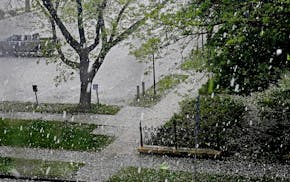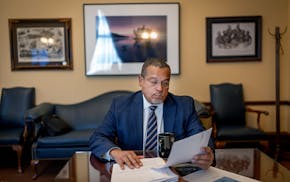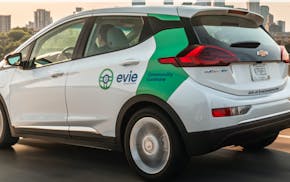The Minneapolis City Council on Thursday unanimously approved a limited two-year expansion plan for ShotSpotter, the technology used to pinpoint gunshots in vulnerable neighborhoods, following a monthslong debate about its efficacy.
Elected officials voted 13-0 to renew the contract, despite concerns by members of the council's progressive wing, who have expressed skepticism about both ShotSpotter's value as an investigative tool and its ability to curb gun violence.
"This isn't going to stop people from being shot and killed," said Council Member Jason Chavez, a vocal critic of the technology who believes that it contributes to the over-policing of communities of color. "I have ShotSpotter in my neighborhood and people are still dropping like flies."
Several council members, including Robin Wonsley, noted that a pending staff audit and an external evaluation of Minneapolis' use of ShotSpotter will produce a report by March 2026, providing the "objective data" they need to make an informed decision about its future before the latest contract expires.
"I do wonder about the effectiveness of this technology, and I think that this approach will give us the answer to those questions," council President Elliott Payne said. "This is not about detecting gunshots, this is about reducing gun violence. That's the goal that we need to have. If this technology helps us get there, I'm all ears to that."
For years, law enforcement has credited the roughly 7-mile network of acoustic sensors with slashing response times, helping investigators collect ballistics evidence and track down suspects who would otherwise have escaped.
It saves lives, police officials argue, by alerting emergency dispatchers within 60 seconds of a microphone's activation, helping officers reach a critical incident — and any gunshot victims — faster. Often times, police are dispatched to a scene via ShotSpotter before a 911 call comes in.
Chief Brian O'Hara and Community Safety Commissioner Todd Barnette sought to expand the system to broader swaths of the South Side, including the Whittier, Loring Park and LynLake neighborhoods, where violent crime trends have shifted since 2020.
But amid pushback, MPD agreed to limit the expansion plan from an additional 2 miles to just 0.6 miles — covering parts of Loring Park and Whittier, which contain some of the city's most glaring emergent hot spots.
The more moderate proposal swayed the council's skeptics and kept the system intact, but Council Member Linea Palmisano said she was disappointed they did not approve the broader, three-year system expansion sought by MPD.
"Carve-outs for particular areas is not how we should be acting as a body who've committed to representing the best interests of our entire city, and it impacts the entire city," Palmisano said. "I will end up supporting this today, but I want to be on the record that I still greatly prefer the full expansion and the full time on this contract."
Triggered by loud percussive sounds, the surveillance network captures audio clearly enough to triangulate the location of gunshots down to the exact block, determine how many rounds were fired and whether there were multiple shooters. ShotSpotter does not, however, purport to reduce overall gun violence.
Yet a growing body of research questioning the system's reliability in recent years has intensified scrutiny by activists and academics when those contract renewals came before local government bodies.
Critical reports by Chicago's Office of Inspector General and the New York City Comptroller said ShotSpotter became a resource drain, often sending officers chasing alerts where no evidence of a shooting exists. The New York audit also found the system failed to detect more than 200 real incidents of gunfire around Manhattan in 2022.
However, on Wednesday, the Chicago City Council voted 33-14 to keep the technology, although Mayor Brandon Johnson said he will veto the ordinance, according to ABC 7 Chicago.
In Minneapolis, an examination of 4,100 police responses to ShotSpotter activations throughout 2022 shows about 70% with dispositions indicating police didn't encounter anything – no victims, shell casings or physical evidence of a shooting – upon arrival, according to a Star Tribune analysis of 911 dispatch data.
Further research by Campaign Zero, a nonprofit aiming to improve research on public safety and policing, claimed ShotSpotter was placed where more people of color live. According to that report, Black and Native American residents of Minneapolis were three times more likely to live where the surveillance network is placed.
Police counter that the same neighborhoods are most likely to be plagued by gun violence. The majority of the city's homicide victims each year are Black.

After decade of resilience, family of U of M student found frozen awarded $6.4 million

Twin Cities at risk of severe weather with possible hail and tornadoes Monday

As Minnesota AG fights Trump in court, he says executive branch 'belligerence' is growing

